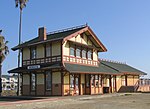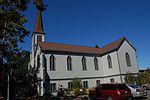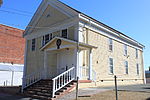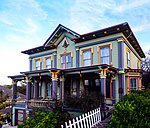Benicia Seminary was founded by a Board of Trustees in June 1852, as the Young Ladies' Seminary of Benicia in Solano County, California in the city of Benicia, California. The Benicia Seminary site is a California Historical Landmark No. 795 listed on September 6, 1964. At is peak the Young Ladies' Seminary of Beniciain had 149 students from all over Northern California. Young Ladies' Seminary of Beniciain was the Protestant Christian Junior college of its day. This was the first of this type of school in California. Mrs. S. A. Lord was the first School Principal in 1852, in 1853 Miss J. M. Hudson became Principal. In 1854, Atkins purchased the school. The Young Ladies' Seminary of Beniciain was sold to Cyrus Mills and Susan Mills in 1865 for $5,000, by Mary Atkins. Thus Benicia Seminary became Mills College. Mills College moved to Oakland, California in July 1871 by train, students, teacher and supplies. Mills College is still a private college. Mills College was granted a charter as a college by the State of california in 1885. Mary Atkins Lynch was born July 7, 1819, in Jefferson, Ohio. Mary Atkins married John Lynch (1824–1900) in 1869. Mary Lynch died September 14, 1882, at aged 63 in Benicia, California. Mary Lynch is buried at Benicia City Cemetery.After the Mills College moved to Oakland, Mills sold the Benicia Seminary building to Rev. Chas. H. Pope. Pope was the pastor of First Congregational Church, now Community Congregational Church. The Rev. and Mrs. C.T. Mills were founding members of Community Congregational Church. Pope improved the building and continued the Young Ladies' Seminary at the site, becoming the Principal. In 1873, Miss Mary Snell became the manager of the school, running it with here sister. In October, 1871, head a re-union meeting for all of graduates and honored Mary Atkins-Lynch and her husband, the Honorable John Lynch, at the time a US Surveyor general for the State of Louisiana. John Lynch was also the Louisiana Centennial Commissioner. The Lynchs later moved to back to California. In June 1877, the Young Ladies' Seminary celebrated held its 25th anniversary.A historical marker is at the site of the former Benicia Seminary on 110 West J Street, Benicia, California. The marker was placed there by Benicia Old Timers Committee in 1937.










